The DFI RDX200 CF-DR Motherboard Review
The DFI RDX200 BIOS
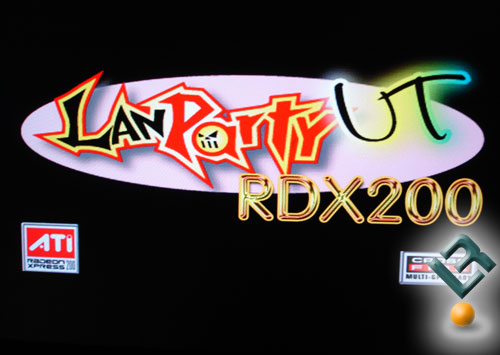
Those of you that love the DFI NF4 LANParty BIOS’ are going to love the RDX200 CF-DR’s BIOS, and those of you that hated the DFI NF4 LANParty’s BIOS are probably going to hate the RDX200 CF-DR’s BIOS. To make it a little clearer, the NF4 LANParty BIOS is probably the most customizable and extensive BIOS I have ever seen. Not only that, those of you have owned the board and frequented the DFI forums are I’m sure quite familiar with Oskar Wu and the rest of the crowd, who seemingly post new BIOS’ on a daily basis (okay, a slight exaggeration, but you get my point).
The RDX200 CF-DR easily exceeds the NF4 LANParty boards in the customization category. It’s almost as if a company actually stopped and listened to the the target audience before generating this board.
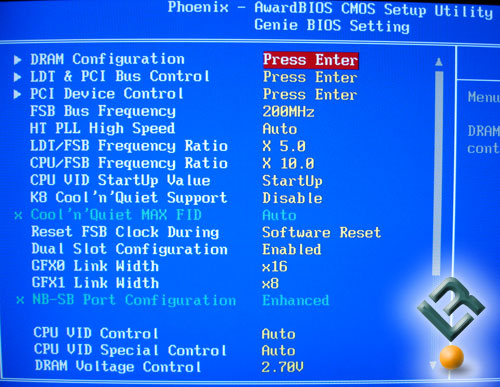
Upon initial inspection, the DFI RDX200 CF-DR BIOS looks almost identical to that of the LANParty NF4 boards, but rest assured, this board has everything DFI’s NF4 boards do, and then some.
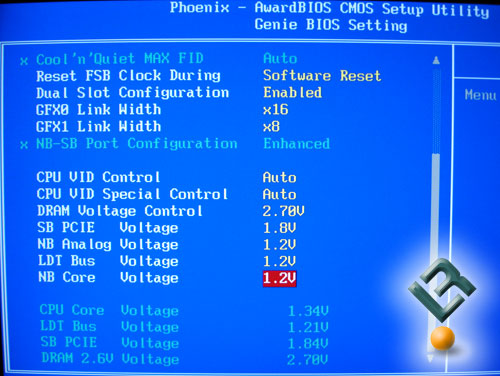
While the CPU VID Control (voltage to your CPU) and CPU VID Startup Control (voltage applied to the CPU during POST) is the same as the DFI LANParty NF4 boards with a max voltage of 1.55V. DFI added several more options to the CPU VID Special Control menu (This setting allowed you to add extra voltage to the processor that is not normally available. Before tweaking this setting, make sure you do you math as this is presented in percentages, a simple mistake here could easily kill your processor).
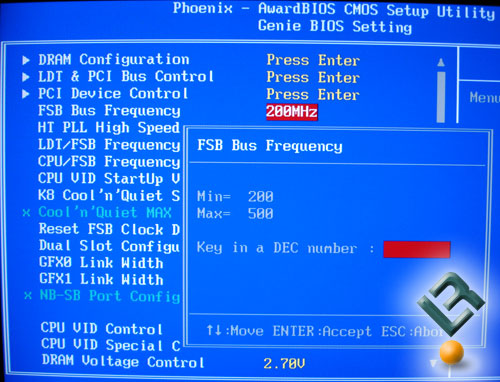
Another hint of the crowd this board is aimed at, the FSB Bus Frequency scales from 200 all the way up to 500! I’m skeptical that anyone will ever actually use a 500FSB setting, but just to have that option is pretty sweet.
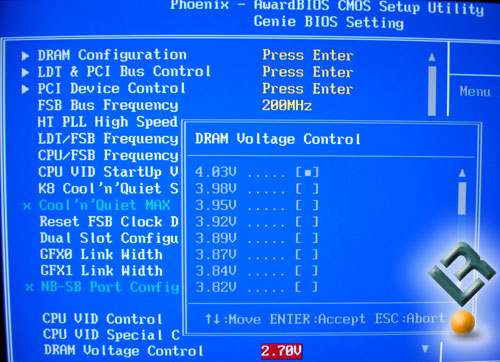
Those of you who have used the NF4 LANParty boards will remember the crazy voltages that those boards allowed for the memory. The issue was that you always had to change the 5V jumper in the upper corner of the board. Some people had problems following directions and blew up their CPUs, motherboard, memory oer all of the above because they didn’t follow the very specific directions for changing the jumper.
DFI made the entire process much simpler with the RDX200 CF-DR by removing the jumper altogether. Now, straight from the BIOS you can set the DRAM voltage anywhere from 2.4 all the way up to 4.03V. This is one big feature that sets DFI boards apart from other enthusiast boards on the market.

Comments are closed.